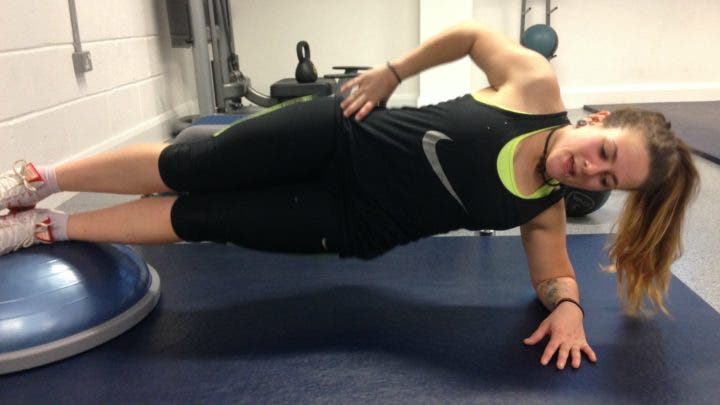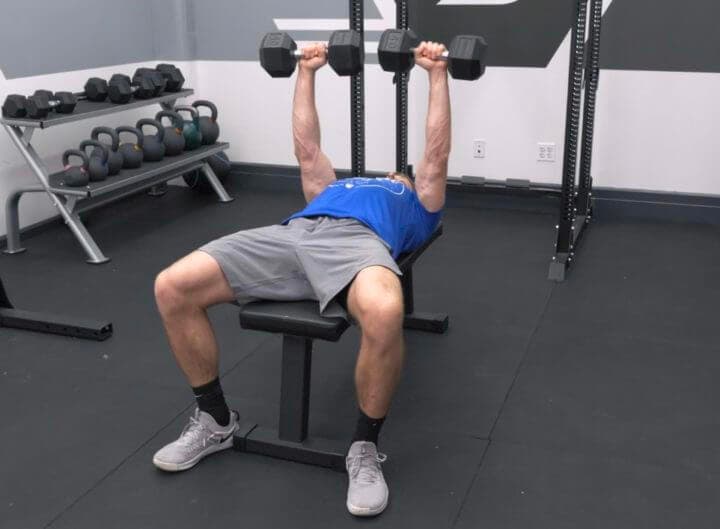Exercises to strengthen the pectoral area go beyond improving physical condition, helping to improve physical performance when executing any sport, such as cycling.
When cycling, the chest area helps to keep the body stable and to guide the riding of the bicycle. This is to imply that a strong pectoral helps to sustain large loads and at the same time obtain good stability; on the other hand, it will help you avoid injuries caused by muscular imbalances.
If you have muscle imbalances, then it is important to correct these problems. To do this, you must put into practice these 6 chest exercises to correct muscle imbalances .

Exercises to correct muscle imbalances
If you train the areas of the body most used and necessary for the execution of a sport, there is the possibility of neglecting the other muscles that are “not used” in this activity. For example, cyclists tend to train the quadriceps and back areas, but tend to neglect the pectoral area, which can contribute to chronic neck, back and shoulder pain.
Therefore, balancing all parts of the body is key to avoiding injury and performing efficiently during any physical activity.
To train your chest efficiently , perform the exercises below. If you are a cyclist, you should incorporate strength training into your routine at least two to four times a week. You don’t have to do all 6 exercises in every training session, but at least incorporating two of them is recommended.
This training will help your body adapt in a better way to circumstances where it is required to carry heavy weights or sustain your body weight for long periods of time, such as cycling.

Exercises for the chest
1. Shoulder car
- Place the palm of your left hand towards your body, while slowly extending your arm upwards.
- Pass your left bicep over your left ear, while using your lats to lower your shoulder.
- Flip your palm outward and begin a “bow motion” behind you, while simultaneously rotating your shoulder internally (thumb should be up in final position).
- Go back to the starting position while doing all the movement described above, but in reverse.
- Do 5-10 reps for each arm.
2. Unilateral press in kneeling position
- Start in a kneeling position, then bring your right foot forward, your left foot back, and both knees bent at 90-degree angles.
- Hold your weight in your left hand (the same side as your knee that is on the floor).
- Place the dumbbell on your shoulder with a neutral grip, with your elbow tight against your chest.
- Extend your left arm up, keeping your biceps close to your ear.
- Pause at the top before slowly lowering yourself.
- Do 10-12 reps for each arm.
3. Side plank
- Begin by lying on the right side of your body with your feet stacked.
- Stand on your right hand, with your shoulder directly above your wrist, with your fingers pointing away from your feet.
- Maintain a tension in your core so that you can lift your hips so that your body can form a straight line from your feet to your heels.
- Hold this position for about 20-30 seconds.
- Change to your side and repeat the movement again.

4. Reverse iron
- Begin by sitting on the floor with your hands near your hips, your shoulders aligned above your wrists, your fingertips toward your feet, and your legs extended outward.
- Keeping your head aligned with your heels, press down on your glutes and hamstrings, and lift your hips so that your body forms a diagonal line.
- Hold this position for 20 to 30 seconds.

5. Close grip chest press
- Lie on your back on an exercise mat or bench, with one weight in each hand at the same level as your chest, palms facing inward, and the weights touching.
- On the exhale, push the weights directly onto your chest. The wrists should be perfectly aligned on your shoulders.
- Return to the starting position. Do about 10 or 12 repetitions.

6. Pull over with dumbbell
- Lie on your back on a bench, grab a dumbbell and hold it by one end with your hands in a diamond position.
- Lift the weight directly across your chest. Slowly begin to lower your arms behind your head. Keep pressure on the core and the stretched rib area.
- Once your biceps are next to your ears, return your arms to the starting position.
- Repeat this movement 10 to 12 times.

conclusion
Exercises for the pectoral area provide you with great benefits when performing sports activities, helping you to improve stability, to be able to support large loads of weight and to keep your body stable under high pressure, as is the case with cycling, especially on slopes. or uploads.
It should be noted that the pectoral is one of the most important muscle areas, since our physical performance depends largely on it when performing exercises with large loads of weight. On the other hand, pectoral training will help you avoid long-term injuries, especially when doing activities that require a high demand for this area of the body.
References
- Ashley, M. 9 Chest Exercises That Correct Muscle Imbalances and Prevent Injury. For Bicycling [Revised September 2019].
